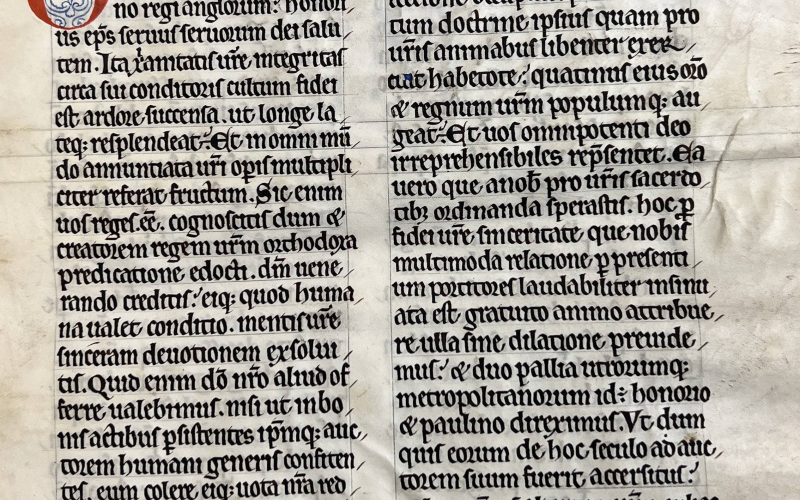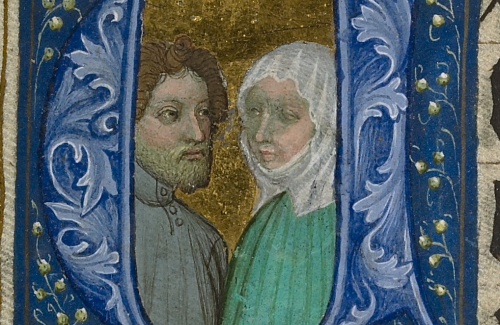#16 Bede
This item was the first in our week of handwritten items. While you might think of medieval books when it comes to manuscripts, Pembroke actually owns a wide range of items written by hand.
However, we are going to be starting with the medieval. Yesterday was the anniversary of the death of St Bede, the ‘Father of English History’. Our copy doesn’t quite date back to 735, but it has some interesting features nonetheless.
1. This is an incomplete copy of Historia Ecclesiastica Gentis Anglorum.
2. It was written on parchment, some time in the twelfth or thirteenth centuries.
3. It measures 362 by 266mm.
4. St Bede the Venerable was a Benedictine monk, theologian, and historian who lived from about AD 672 to 735.
5. He was accepted as an oblate into the twin abbeys of Wearmouth-Jarrow (Northumbria) at the age of seven, and remained there for the rest of his life. He was named Doctor of the Church by Pope Leo XIII in 1899.
6.The Historia Ecclesiastica is the finest example of an ecclesiastical history to survive from the Latin West. Written from largely regional and mainly oral information without Bede leaving his monastery, the finished edifice of this work is full of rhetorical art.
7. The manuscript has some names written on it, presumably by later owners: “Anthonye Cole (of Caldwych)” (fos. 46v, 47r, 67v); “James Parsal (or Pursal)” (fo. 52a). Additionally on f.50v, someone has tested their quill in the bottom right margin.
8. Once, when it was repaired, the front and back covers were swapped. However, the boards themselves, covered in white leather, are contemporary.
9. Bede manuscripts are divided into groups, depending on which version they copied (more on the transmission of manuscripts later this week). Ours is a C-type manuscript of the Gloucester sub-group.
10. At the very back, a later owner has doodled a sketch of two men ‘fighting’. From the clothing, they probably date from some centuries after the original.

